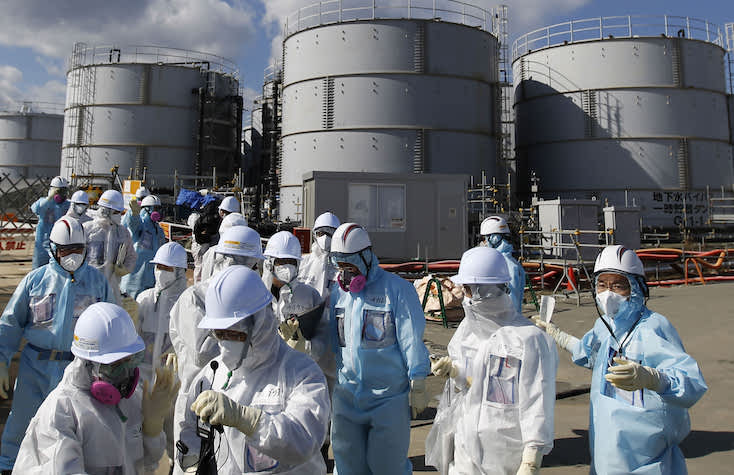
A top government spokesperson announced on Friday that Japan intends to begin discharging more than a million tons of treated water from the wrecked Fukushima nuclear power plant into the ocean this year.
The International Atomic Energy Agency (IAEA) has approved the proposal, but the government will hold off on publicizing it until it has received “a detailed report” from the UN watchdog, according to top cabinet secretary Hirokazu Matsuno.
The greatest nuclear catastrophe since Chernobyl occurred in 2011 when a major underwater earthquake and wave overloaded cooling systems at the facility.
Work on decommissioning has begun and is anticipated to take around 40 years.
Between April and November of last year, the site generated an average of 100 cubic meters (3,500 cubic feet) of polluted water each day, including groundwater, ocean, precipitation that seeps into the region, and water used for cooling.
Since there are currently more than 1.3 million cubic meters of water on site and room is running out, the water is filtered to eliminate different radionuclides and transferred to storage tanks.
After the release facilities have been finished and tested and the IAEA’s entire report has been made public, Matsuno stated that “we estimate the timeframe of the release would be somewhere around this spring or summer.”
“The entire administration will use every effort to maintain safety and take precautions against false reports.”
The remarks make reference to ongoing worries about the release plan expressed by neighboring nations and regional fishing groups.
Fishermen in the area worry that the release may harm their image after spending years trying to restore consumer confidence in their products via rigorous testing.
With the exception of one radioactive element, tritium, which experts claim is only dangerous to people in high quantities, the treated water, according to plant operator TEPCO, complies with national guidelines for radionuclide levels.
It intends to use a kilometer-long (0.6-mile) undersea conduit to discharge the water offshore over a number of decades after diluting it to lower the tritium levels.
According to the IAEA, the emission “will not affect the environment” and complies with international regulations.
The idea has come under fire from the region’s neighbors, notably China and South Korea, as well as organizations like Greenpeace.
Around 18,500 individuals were murdered or went missing in the northeastern Japan tragedy in March 2011, with the tsunami killing the majority of them.
Thousands of locals in the vicinity of the Fukushima plant were either forced to leave their homes or made the decision to do so.
Although no-go zones currently only comprise around two percent of the Fukushima region, the population in many communities is still much fewer than it was before.
RELATED ARTICLES
- German School Bans Children from Drinking Water Because its Offensive
- Mutant Wolves with Superpowers that can Fight Cancer found in Ukraine's Chernobyl
- Japan suspends Moderna Covid vaccine after another million doses found contaminated, bringing total to 2.6 million
- More people Suicide in Japan because of the Restrictions than the Virus Total Death Toll
- Japan releases Thousands of potentially infected Diamond Princess passengers onto the streets of Tokyo











